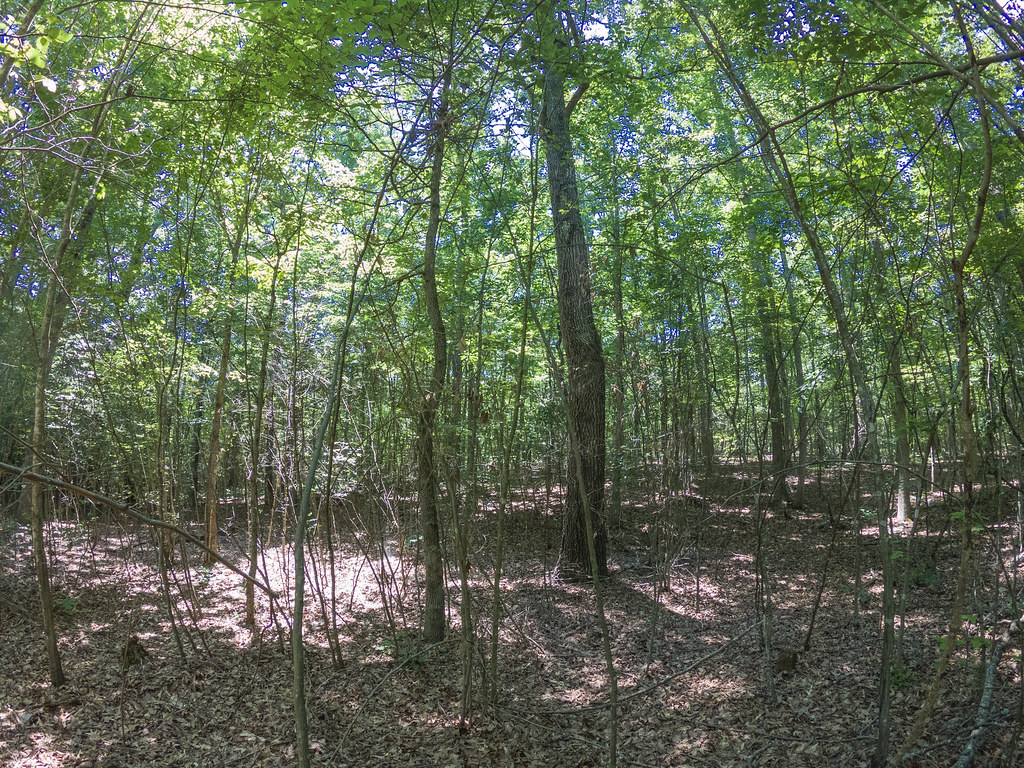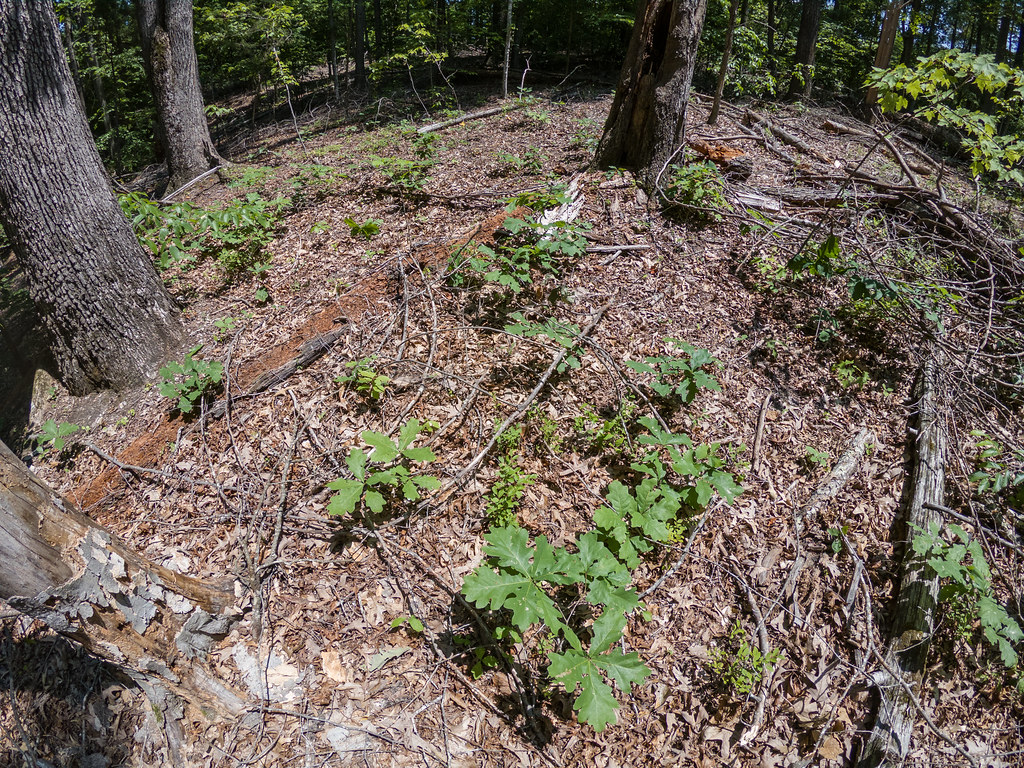In words and pictures.
As some of you may know I'm a professional forester. I work for a consulting forestry firm, and our work involves managing timberlands to achieve the owner's objectives, be they timber, wildlife, recreation, water quality, aesthetics, or some combination of them all.
I have a longtime friend and client who has acquired some local timberland over the years. Prior owners didn't exactly engage in what I might term the "best" forest management; there's been a history of high-grading (cutting the best timber and leaving the rest) for the past 75-100 years.
As a result we've been left with a stand with a HEAVY beech understory and midstory. Now, beech is pretty much a trash tree; poor form, prone to rot and hollow, and it's just not worth very much. My client wants to encourage oak regeneration, but with all that beech the oak really doesn't have much of a chance. What we've been doing since 2014 is a basal herbicide treatment on the beech to kill it off, let a bit more light onto the forest floor, and remove the competitive pressures that all that beech is having on oak regneration.
Here's a spot we treated about 2 weeks ago. Note the near thick midstory; most of that is beech and it's in the way.
 Broadleaf Beech TSI 2018
Broadleaf Beech TSI 2018 by
FredMan, on Flickr
Here's an area we treated last year. All those beech stems are dead, but still standing. Note how we're starting to get some more light onto the forest floor. Oaks are generally shade-tolerant species; regeneration thrives in partial sunlight but can't really compete with near full-shade conditions.
 Broadleaf Beech TSI 2017
Broadleaf Beech TSI 2017 by
FredMan, on Flickr
Here's an area we treated in 2015. All those beech stems have now fallen to the ground. See how light is now getting down to the floor? See all that green stuff on the ground? That's oak regeneration. That's what we're after.
 Broadleaf Beech TSI 2015 Oak Regen
Broadleaf Beech TSI 2015 Oak Regen by
FredMan, on Flickr
And here's what things look like from our first year of treatment, in 2014. A nice healthy crop of oak seedlings starting to come into their own. All those dead sticks you see on the ground (and standing on the left side of the frame) is beech.
 Broadleaf Beech TSI 2014 Oak regen
Broadleaf Beech TSI 2014 Oak regen by
FredMan, on Flickr
As you might imagine, this is a lengthy process. Will take decades to achieve our desired future condition, and neither my client nor myself will likely live long enough to truly see the ultimate result. But his children and grandchildren surely will, and while I do this work because I love the woods (and hell, they DO pay me to do it!) I also get great satisfaction out of gently nudging Mother Nature down a preferred path.
 Win a FREE Membership!
Win a FREE Membership!